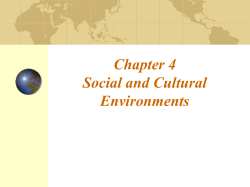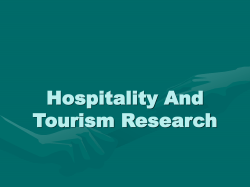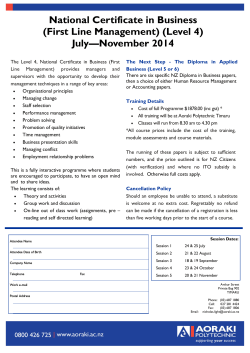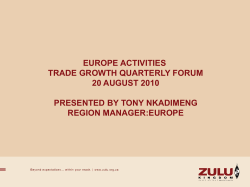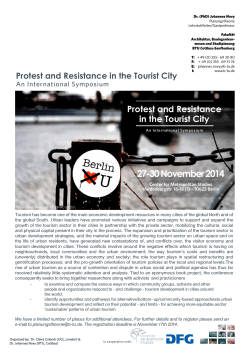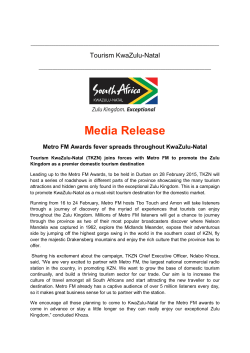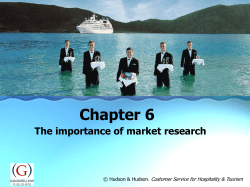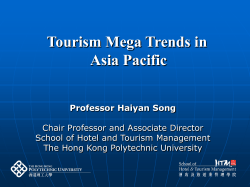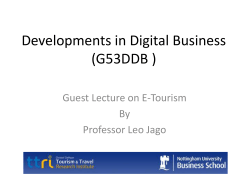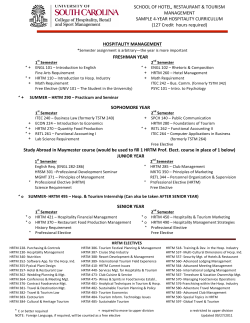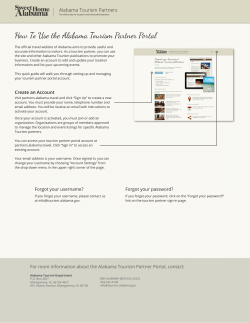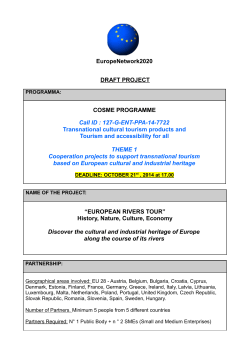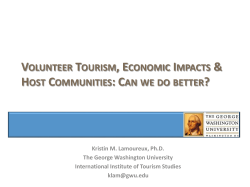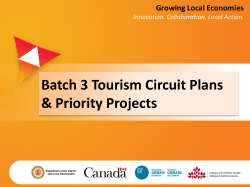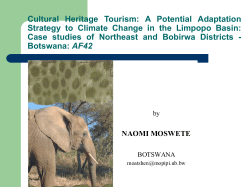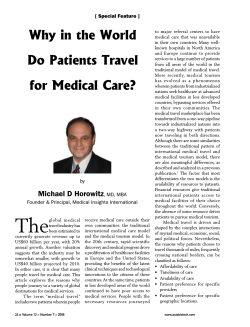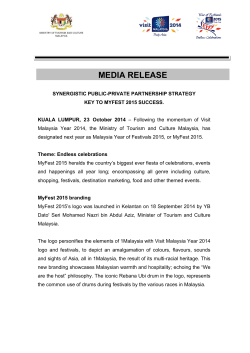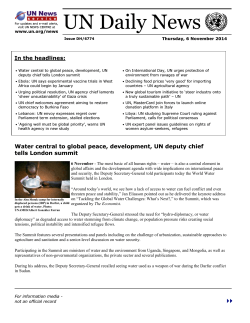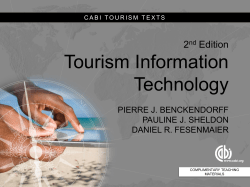
Unit 3 Culture and Strategy
Strategy for Tourism Unit 3 Culture and Strategy Reading Book Ch Tribe, J, (2010) Strategy for Tourism, Goodfellow Publishers, Oxford. 3 Capon, C. (2008) Understanding Strategic Management, Prentice Hall: Hemel Hempstead. 5 Tribe, J. (2005) The Economics of Recreation, Leisure and Tourism, Butterworth Heinemann, Oxford. - Johnson, G., Scholes, K., and Whittington, R. (2008) Exploring Corporate Strategy, Prentice Hall: Hemel Hempstead. 5 Objectives After studying this chapter and related materials you should be able to understand: Culture, difference and reproduction Organisational culture Cultural web The cultural environment and critically evaluate, explain and apply the above concepts. Case Study 3: The Walt Disney Company Larry Lynch of the Disney Institute, Walt Disney World, Florida, explains the role of the WDC “university” in inducting new staff: “… it all begins the day new Cast Members arrive for orientation at Disney University, the company's internal training operation. The timing couldn't be better to show them how our company thinks, to offer concrete examples of how creativity and innovation have helped us grow, and to emphasize how our ongoing traditions have been the steady hand that guides us. Those traditions are pointed out again when new Cast Members are introduced to their assigned workplaces. As they learn the culture of the company, they recognize the traditions in the standard operating procedures and established norms of their work areas…” Culture “a set of shared values, attitudes, goals, and practices that characterise a group of people.” Organisational Culture Organisational culture refers to organisational beliefs, values and attitudes (Schein, 1985; Martin and Siehl, 1983). It describes out the way things are done in a particular organisation and forms the basis for the rules of acceptable and unacceptable behaviour. Organisational culture is thus the arbiter of organisational norms and it therefore acts as a powerful force in encouraging or frustrating the emergence of new missions and strategies. This is particularly so where culture is deeply embedded. The term cultural web (Johnson and Scholes 1993) is a useful device for highlighting the different strands of an organisation's culture - symbols, rituals, stories and power, which add up to a paradigm - an agreed way of going about things. Mission and Culture Cultural variance between countries in which tourism organisations operate can be understood by reference to differences in: attitudes to authority attitudes to work and leisure beliefs including religion and materialism traditions pursuit of individual or community goals definitions of good and bad, worthy and unworthy (the moral and ethical system) sources of status Cultural norms are transmitted by and changed by the family education mass media the arts government Hofstede The relationship between national cultures and organizational cultures has been analysed by Hofstede & Hofstede (1991) and Hofstede (2001) and these studies uncovered national and regional cultural groupings that affect the behaviour of societies and organizations that work within them. Hofstede found five dimensions of culture in his study of national work related values: Low vs. high power distance (PDI) Individualism vs. collectivism (IDV) Masculinity vs. femininity (MAS) Low vs. high uncertainty avoidance (UAI) Long vs. short term orientation (LTO) Country Scores for Hofstede’s Cultural Dimensions Reproduction and Path Dependency Cultural reproduction (Bourdieu, 1973) refers to the way in which culture (including values, attitudes, goals, and practices) is maintained over time and transmitted from one generation to the next. Acculturation refers to the process by which new members are inducted into the value systems of a culture. Path dependency occurs when certain decisions and events create paths or routes into the future and exert long term effects on subsequent decisions and events. The Cultural Web A cultural web (Johnson et al., 2008) is a useful device for highlighting the different strands of an organisation's culture. These include: symbols rituals and routines stories power structures and organisational structures control systems Cultural Web Etihad Airways: Different Culture? Cultural Types Miles and Snow (1978) distinguish between defender types, and prospector types of cultures in organisations. Defenders Conservative seek security Cautious avoid change Inflexible set in their ways reactive Prospectors outward-looking responsive to environment daring opportunistic flexible adaptive proactive The Cultural Environment The broad political system within which entities operate should also be considered as an important aspect of the cultural environment. Competing ideologies include: Communism Democratic Socialism Neoliberalism and Third Way politics Review of Key Terms Culture: a set of shared values, attitudes, goals, and practices that characterise a group of people. Hofstede: studied the relationship between national cultures and organizational cultures. Ideology: a system of beliefs that directs the policies and activities of its adherents. Cultural reproduction: the way in which culture is maintained over time and transmitted from one generation to the next. Path dependency: when certain decisions and events create paths or routes into the future and exert long term effects on subsequent decisions and events. Organisational culture: organisational beliefs, values and attitudes. Cultural web: the different strands of an organisation's culture Discussion Questions 1. Analyse the cultural issues that relate to The Walt Disney Company in relation to its strategy. 2. Construct a cultural web for a tourism entity of your choice giving examples of the components. 3. Explain the uses of Hofstede’s dimensions of culture for understanding the culture of a tourism entity. 4. What causes reproduction and path dependency? Explain why these are problems for tourism entities that you are familiar with. 5. Explain the interrelationship between socialism, modernization, and traditional culture in China and its relevance for the study of the culture of tourism entities. Exercise: Cultural Difference Prepare short notes giving: Advice for tourists coming to country x from country UK on cultural differences Advice for hotel in UK for understanding cultural differences in visitors from country x Advice for UK employees who get a job in the travel trade in country x Case Study: New Zealand Examine the New Zealand Tourism Strategy for 2015 Evaluate the appropriateness of the mission and aims Identify the key stakeholders who influence the mission Analyse the sources of stakeholder power What is the relationship between culture and mission? NZ Tourism Strategy Details of the Tourism Strategy for New Zealand can be found at http://www.nztourismstrategy.com/files/NZTS 2015%20final.pdf For lecturer use only: nz tourism strategy 2015.pdf Strategy for Tourism Unit 3 Culture and Strategy The End
© Copyright 2025
